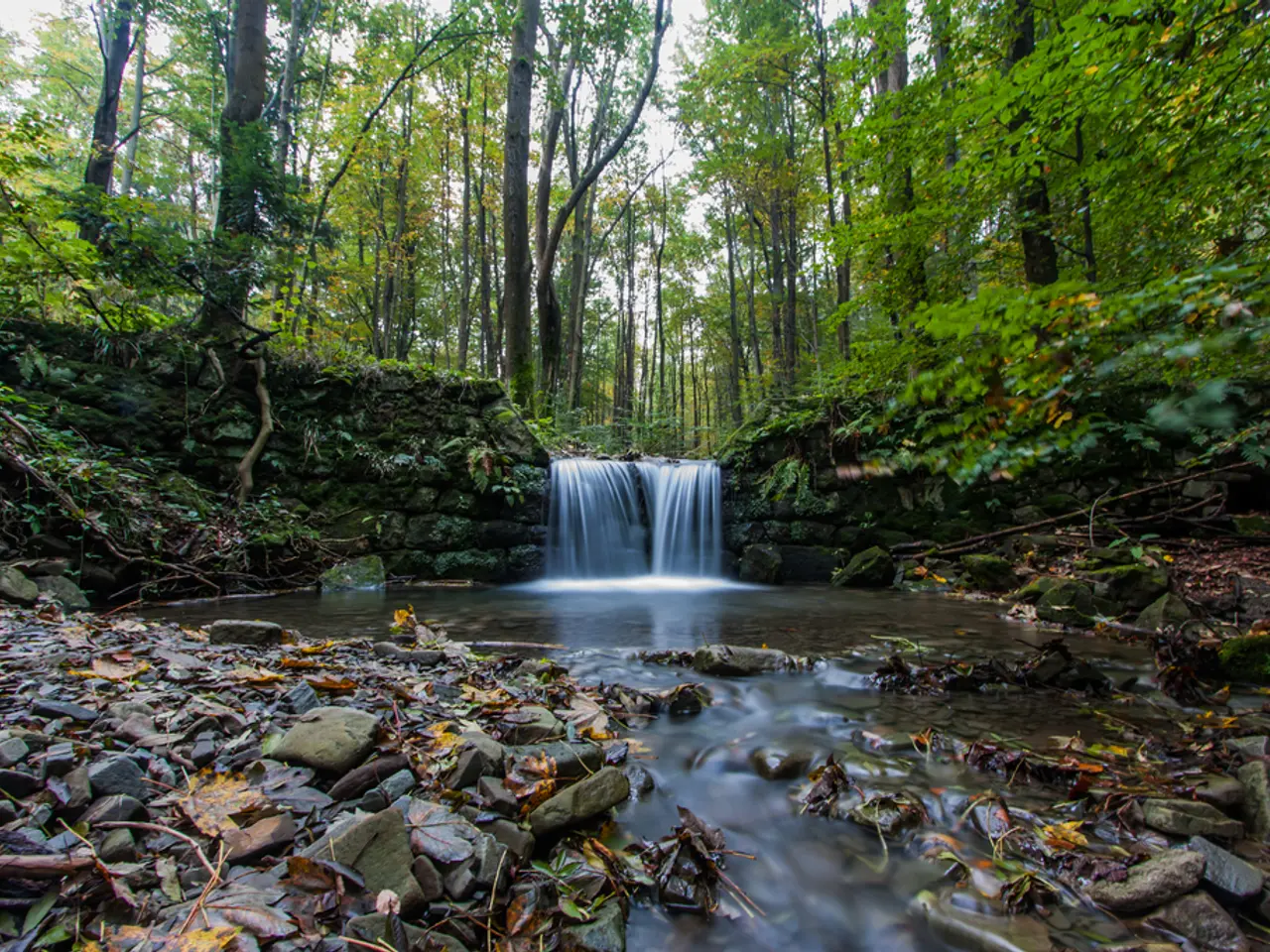Agroforestry for Water Preservation: Demonstrated Advantages & Techniques
Agroforestry, a farming method that integrates trees, crops, and sometimes livestock, is gaining traction as a strategic solution for sustainable water conservation. This innovative approach, which represents a shift from conventional monoculture farming, offers numerous benefits for both farmers and the environment.
By integrating trees and shrubs on farmland, agroforestry systems help reduce surface runoff, control erosion, and boost water infiltration into the soil. Trees create better microclimates by providing shade and increasing humidity, which lowers evaporation loss and improves soil moisture retention, leading to enhanced water-use efficiency for crops [1][3].
Specifically, agroforestry systems:
- Reduce water runoff by stabilizing soil and slowing rainwater flow, increasing water absorption into the soil rather than surface loss.
- Control erosion, which maintains soil structure and its ability to retain moisture.
- Improve microclimate conditions such as shade and humidity, which reduce water evaporation from both soil and crops.
- Enhance soil quality through leaf litter and root systems, boosting organic matter and soil water-holding capacity.
These effects can lead to significant water savings—up to half the previous consumption—especially when combined with complementary practices like cover cropping, crop rotation, and efficient irrigation methods [1][3]. This synergistic approach enhances sustainability and resilience in farming systems by conserving water resources while maintaining or improving yields.
Agroforestry systems can also reduce surface runoff by 50-80% compared to conventional farming, significantly lowering flood risks in downstream communities. Strategic Windbreak Installation is essential infrastructure for water conservation, particularly in regions with consistent wind patterns or extreme weather events.
Buffer design typically includes three zones: a tree zone adjacent to water bodies, a shrub zone for nutrient interception, and a grass filter strip for sediment capture. Properly designed buffers can remove 70-95% of sediments and nutrients from agricultural runoff.
Moreover, tree roots improve soil aggregation, creating stable pore spaces that resist compaction and act like a sponge. Tree roots also create preferential flow paths for water movement to deeper soil layers, reducing surface evaporation.
Agroforestry techniques for farmers operate on four fundamental principles that directly impact water conservation. Alley cropping systems alternate rows of trees with crop strips, reducing crop water loss by 15-30% through decreased evapotranspiration. Contour tree planting is a watershed management technique that reduces soil erosion by 70-90% while increasing water infiltration by 40-60%.
Successful agroforestry water management implementation requires systematic planning considering site conditions, economic objectives, and long-term sustainability goals. Economic incentives through conservation programs like the USDA's Conservation Reserve Program often offset establishment costs while providing annual rental payments for maintained buffer areas.
Native species selection provides optimal ecosystem benefits while requiring minimal maintenance. Agroforestry demonstrates remarkable drought resilience, with farms maintaining crop yields 15-25% higher than conventional farms during droughts. In addition, these systems provide additional income opportunities through tree products.
Modern agroforestry represents a promising approach to sustainable farming, accelerating groundwater recharge rates and offering a strategic method for farmers to optimize resource use and environmental benefits. By working with nature's water cycle, agroforestry systems offer a pathway towards more resilient and sustainable agriculture.
[1] FAO (2011). Agroforestry for food security, environmental services and rural development. http://www.fao.org/3/a-i3602e.pdf [3] Smith, S. D., K. L. Smith, and S. A. Smith (2016). Agroforestry Systems and Water Management. In: Encyclopedia of Sustainability Science and Technology. Elsevier.
- Agroforestry systems, by reducing water runoff and improving microclimate conditions, help sustain the health-and-wellness of both farmers and the environment.
- Effective water management in agroforestry can lead to significant savings, as much as half the previous consumption, making it a crucial strategy for sustainable farming.
- The alignment of agroforestry with concepts like fitness-and-exercise is apparent, considering its positive impact on climate-change through groundwater recharge and flood risk reduction.
- Agroforestry's emphasis on environmentally-friendly practices, such as the use of native species and optimal ecosystem benefits, show its commitment to ethical and sustainable resource utilization.
- Nutrition, mental-health, and overall well-being are indirectly impacted by agroforestry, as it strengthens the environment, support local economies, and ensures access to diverse food sources.




